
Drone Inspection Guide: How UAV Inspection Is Used Today
Drone Inspection Guide: How UAV Inspection Is Used Today Drone inspection technology is now widely used across industries where routine
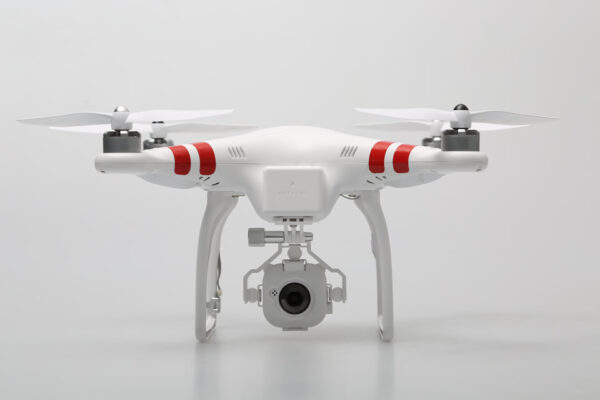
The first DJI drone marked a huge moment in drone history. DJI, a company based in China, started by creating a drone that changed the way we look at technology in the air. The first DJI drone, called the Phantom 1, was released in 2013. It was a big step forward because it made flying a drone easier for everyone, even people who had never flown a drone before.
This drone was not just about fun – it was built for serious use. It helped open the door for more people to get involved in drone flying, from hobbyists to professionals.
Over the years, DJI has continued to improve its drones. From the first DJI drone to the latest models, each has added new features like better cameras, longer battery life, and easier control.
The history of DJI drones shows how the company listened to what people wanted and made their drones better with each release. Today, DJI drones are used for many things, from photography to rescue missions.
Looking to the future, DJI’s journey continues. The company is always working on new, exciting technology. With each new drone, we can expect more amazing features and improvements.
The first DJI drone paved the way for everything that followed, and who knows what’s next? If you are curious about the timeline, history, and future of DJI drones, you’re in the right place to learn more!
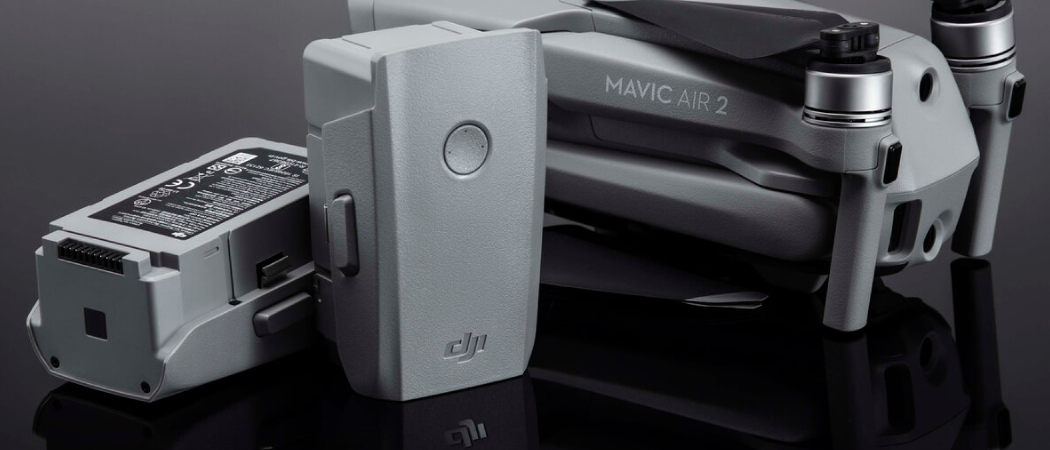
DJI, which stands for SZ DJI Technology Co., Ltd., is a well-known Chinese technology company based in Shenzhen, Guangdong. DJI is famous for creating drones used in aerial photography and videography.
They also design other products like camera systems, gimbal stabilizers, propulsion systems, software for businesses, equipment for farming, and flight control systems.
By June 2024, DJI became a leader in the drone market, holding over 90% of the world’s consumer drone market. Their drones are widely used in industries such as music, TV, and film. Even the military and police have used DJI drones.
However, the company has been working on making sure these drones don’t fall into the wrong hands.
DJI has faced concerns over privacy and security issues, especially since their drones have been used in conflict zones, like during the Russian invasion of Ukraine. Despite some challenges, the company continues to thrive, even though it has been sanctioned by the U.S. government. Despite this, their drones are still available for purchase in the United States.
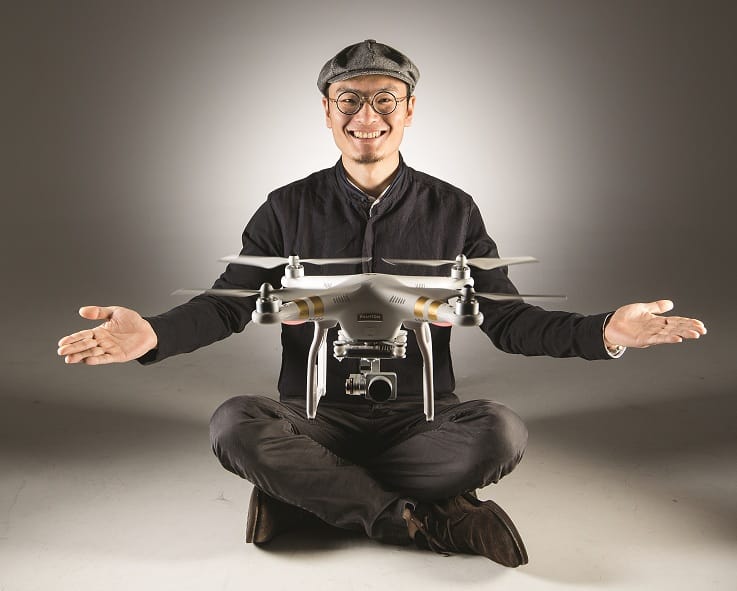
DJI was founded in 2006 by Frank Wang (also known as Wang Tao). Frank Wang, originally from Hangzhou, Zhejiang, attended the Hong Kong University of Science and Technology (HKUST) in 2003. He was part of a team at HKUST that participated in the ABU Robocon competition, where they won third place.
During his college years, Wang built the first DJI prototypes in his dorm room. He sold parts for flight controls to universities and electric companies in China, which helped him move to Shenzhen. There, he started the company with a small team.
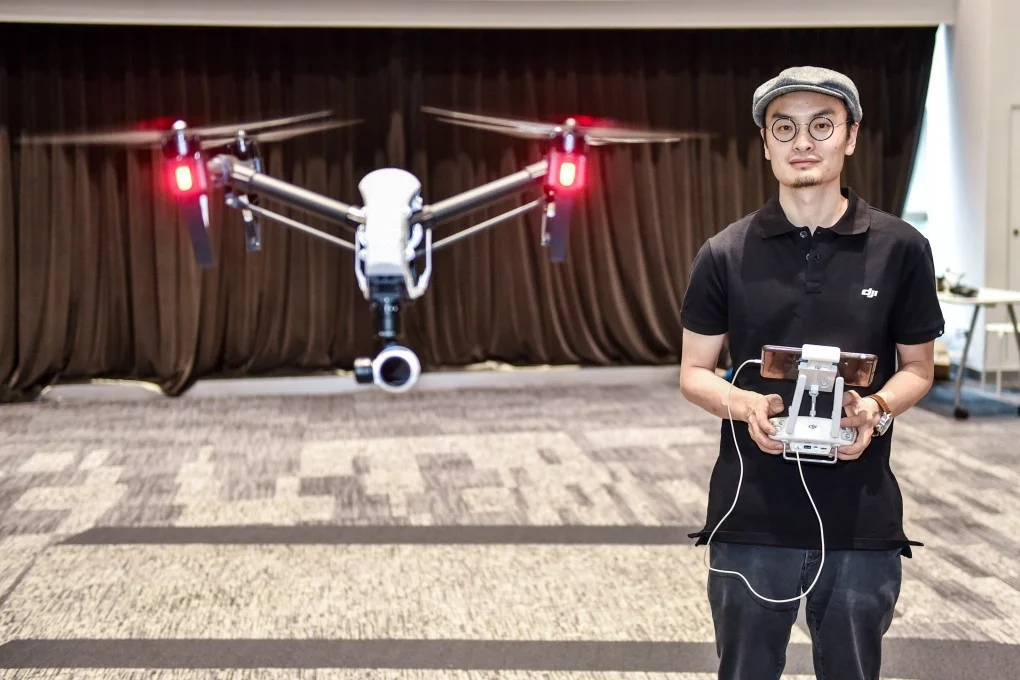
In the beginning, DJI faced challenges, including high employee turnover due to Wang’s perfectionist approach. Despite these struggles, the company slowly grew, thanks to a $90,000 investment from Wang’s family friend, Lu Di.
By 2009, DJI made headlines when their components helped a team fly a drone around the peak of Mt. Everest. This success marked a milestone for DJI’s reputation.
In 2010, Frank Wang brought on a high school friend, Swift Xie Jia, to handle marketing. From there, DJI started catering to drone hobbyists outside of China. In 2011, DJI expanded further by creating DJI North America, a branch that focused on selling drones to a wider audience.
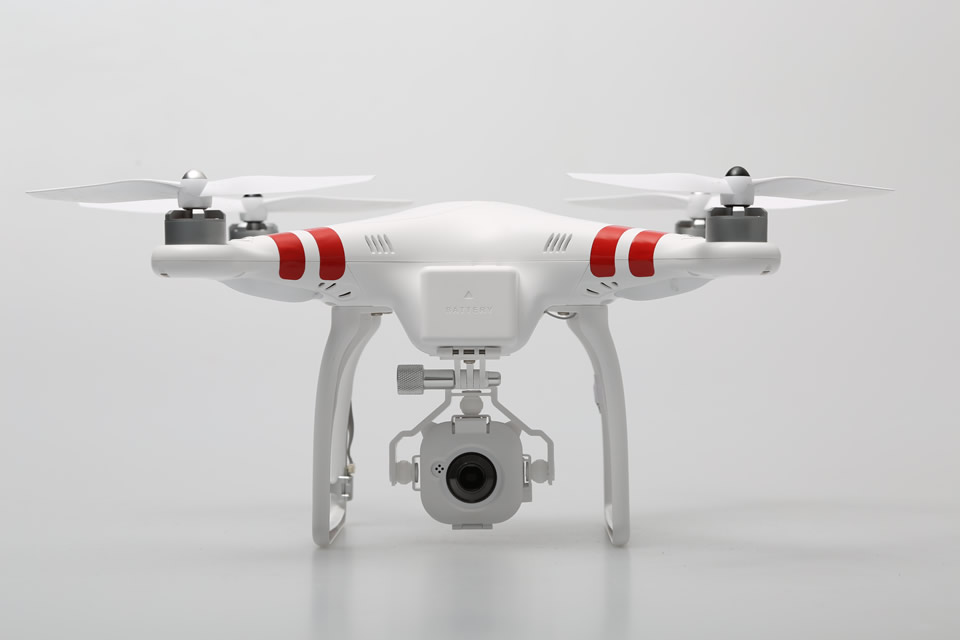
Drone technology has come a long way, evolving from a simple hobby to an industry worth billions. Today, drones are not only safer but also smaller, more affordable, and come with improved camera quality and advanced flight features. The journey of DJI began in 2006, and since then, the company has made huge strides in drone technology.
At first, DJI focused on selling DIY drones and controllers. However, in 2013, they launched their first DJI drone, the DJI Phantom 1, which marked the beginning of their dominance in the drone world. The Phantom 1 helped change the way people saw drones and led DJI to create even better models like the DJI Mavic Air. DJI’s focus was always on creating drones that combined excellent design and technology, making them user-friendly and high-quality.
One of the key reasons DJI became so successful was its focus on research and development. The company is based in Shenzhen, China, a hub for technology, and this gave them an advantage in developing important components that would push drone technology forward. DJI was able to create software and hardware that made drones safer, more reliable, and easier to use than ever before.
One of DJI’s earliest breakthroughs was integrating GPS into drones. Before this, drone pilots couldn’t always tell where their drones were in the air, which made flying difficult and unsafe. With GPS and a built-in compass, drones could hover in place, making them much easier to control and safer to fly. This development was a game-changer and made drones accessible to more people.
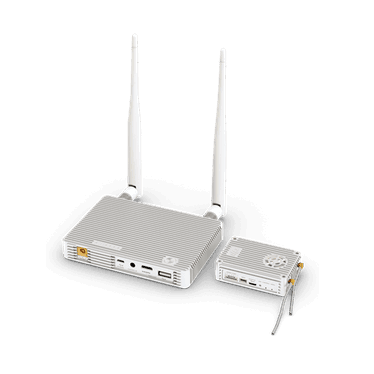
Another important innovation was DJI’s Lightbridge transmission system. Before this, drone pilots couldn’t view live footage from their drone’s camera when it was far away. This made aerial photography and videography challenging. With Lightbridge, pilots could now stream HD footage directly to their smartphone, making it possible to see exactly what the drone was recording in real-time.
DJI also introduced self-diagnosing software, which made it easier for users to check their drones for issues. In the past, drone owners had to memorize blinking lights to figure out what was wrong with their drones. With the new software, users could easily check every part of their drone and quickly identify any problems. This made DJI drones a top choice for people looking for reliable, easy-to-use drones.
From the launch of their first DJI drone to their many innovations, DJI has shaped the drone industry and continues to lead with groundbreaking technology that makes flying drones easier and more enjoyable for everyone.
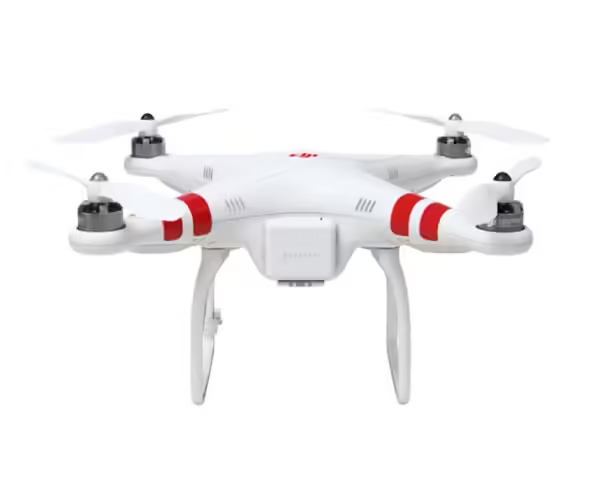
In 2013, DJI introduced its first DJI drone, the Phantom 1. This drone was special because it was the first ready-to-fly drone system from DJI. It had an internal GPS, which made flying much easier and safer. The first DJI drone allowed pilots to fly more smoothly and keep the drone in place, even if they let go of the controller. Before this, drones were hard to control and would often drift away.
The Phantom 1 had a short flight time of just under 10 minutes and didn’t come with a camera. To record footage, users had to attach a GoPro or another small camera. Although the footage was shaky, this was a big step forward.
The built-in GPS system gave users more control and stability when flying. The GPS helped the drone stay in one place, which was a big improvement. This made DJI’s drones safer and more reliable than any other drones on the market back then. It also gave users the ability to fly with more precision and confidence.
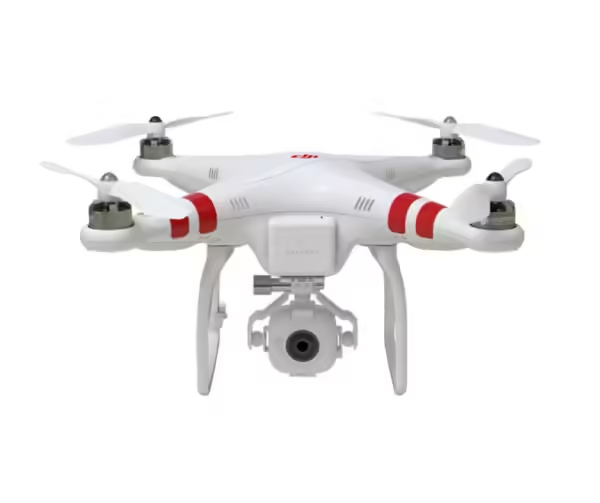
After releasing the Phantom 1, DJI quickly worked on improving their drones to make them even better. In the same year, they introduced the first DJI drone with a built-in camera: the Phantom 2 Vision. This model offered users a longer flight time of up to 20 minutes and could fly as far as 300 meters. The first DJI drone to feature an integrated camera could capture 1080p HD video and 14-megapixel photos, setting a new standard for drone photography.
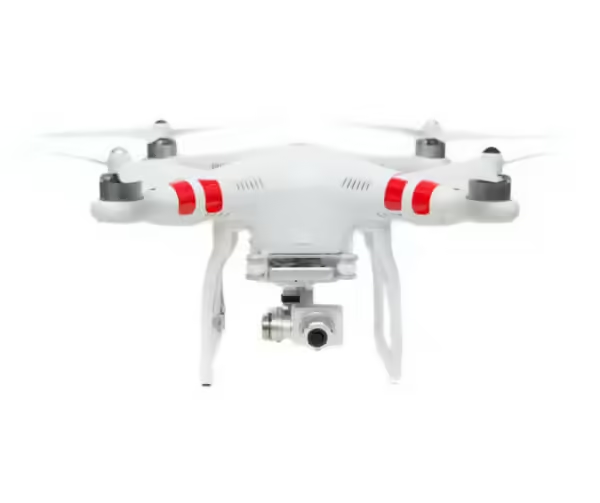
Shortly after, DJI launched the Phantom 2, which was designed to work with a GoPro camera and gimbal system. However, it was the Phantom 2 Vision+ released in 2014 that truly changed the game. This was the first DJI drone to feature a fully stabilized 3-axis gimbal system. Before this, drone users either had to install their own cameras and gimbals or deal with shaky footage since the cameras could only tilt up and down. With the Phantom 2 Vision+, the gimbal system ensured that all footage was smooth and stable, allowing for much more dynamic and creative shots.
The Phantom 2 Vision+ came with a 1080p 14-megapixel camera, up to 25 minutes of flight time, a range of approximately 700 meters, and an advanced GPS system. It was the most advanced and user-friendly drone of its time, making it a top choice for drone pilots everywhere. As soon as the first DJI drone with a 3-axis gimbal was released, it became the most popular drone of the year, and many people recognized DJI’s ability to push the boundaries of technology while making it accessible to everyone.
The Phantom 2 Vision+ also had the option of a Lightbridge 1 add-on, which offered an even longer range and stable HD video transmission up to 1 km. This was a groundbreaking feature at the time, as it allowed drone pilots to view their aerial footage in HD quality right on their smartphones, fully unlocking the creative possibilities of drone technology.
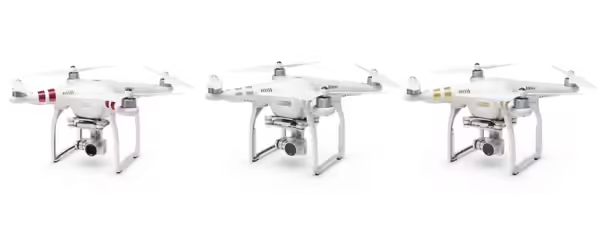
In 2015, DJI introduced the first DJI drone in the Phantom 3 series, which played a major role in the company’s rise to success. This new series helped DJI become the leading drone manufacturer worldwide. The Phantom 3 series included three versions: Phantom 3 Standard, Phantom 3 Advanced, and Phantom 3 Professional. Each version made improvements over the last, giving customers more options to choose from.
The first DJI drone in the Phantom 3 Standard was equipped with a redesigned integrated camera. This camera was capable of shooting 2.7K video at 30 frames per second and took 12-megapixel photos in both JPG and RAW formats. The drone had a range of up to 1 km and could stay in the air for 20 minutes. The Phantom 3 Advanced improved on this by offering an extended range of 2 km, 23 minutes of flight time, and the same 2.7K 12-megapixel camera. The Phantom 3 Professional was the best version, featuring a 4K 12-megapixel camera with a 2 km range and 23 minutes of flight time.
A big upgrade in the Phantom 3 series was the addition of GLONASS. GLONASS is the Russian version of GPS, and by combining it with GPS, the drones could connect to more satellites. This made the drones more stable and accurate while flying, which made them easier and safer to use compared to earlier models.
The Phantom 3 series also introduced the DJI Go App, which became a game-changer. With the first DJI drone, users could control their drone’s camera settings and flight options right from the app. The app would alert pilots if there were any problems with the drone, making it easier for everyone to use the technology. This app played an important role in making drone flying more accessible to a wider audience, thanks to its simple and user-friendly design.

In May 2016, DJI introduced the first DJI drone in the Phantom series that would change the drone industry forever—the DJI Phantom 4. This drone was special because it was the first DJI drone with amazing computer vision and sensing technology. The first DJI drone to have these features made it smarter and safer than any other drone before. The Phantom 4 was designed with new safety technology, like a front and bottom-facing obstacle avoidance system. This system helped the drone detect obstacles in its path and either stop or fly around them to avoid crashes. It was the safest consumer drone available at the time, opening the world of drones to more people.
The first DJI drone in the Phantom 4 series also had a fully stabilized 3-axis gimbal system, a high-quality 4k camera with 12 megapixels, a 5 km flight range, and up to 27 minutes of flying time. It also introduced new intelligent flight modes like ActiveTrack and TapFly, which made the drone easier to control. These features helped the Phantom 4 become very popular in the drone world, quickly becoming one of the most wanted drones for creative aerial shots. The Phantom 4 made it easier for pilots to create stunning footage, as it worked alongside them to produce smooth and professional results.
In the following year, DJI released even more advanced drones in the Phantom 4 series. These included the Phantom 4 Advanced and Phantom 4 Pro. These drones had upgraded features, such as up to 7 km of range, 30 minutes of flight time, and a new 4K camera with 20 megapixels and a 1-inch sensor—this was the best camera ever on a consumer drone at that time. The Phantom 4 Pro also added an upgraded 360-degree obstacle avoidance system for even more safety, ensuring pilots could feel secure while flying.
DJI’s first DJI drone in the Phantom 4 series featured a completely redesigned gimbal system that supported the camera from both sides. This made the gimbal stronger and more stable. This design change meant the camera would produce smooth, cinematic footage without shaky or unsteady shots. It gave users a more professional experience, making their drone footage look smooth and clear.
The Phantom 4 series also came with dual IMUs and a dual-compass setup to improve flight stability and reaction times. Additionally, the first DJI drone in the Phantom 4 series featured an advanced obstacle avoidance system. The drone could intelligently stop or avoid obstacles, helping to keep the flight safe. This system led to more intelligent flight modes like ActiveTrack, where the drone could follow a subject, and TapFly, where the user could tap on the screen to guide the drone.
Through the Phantom series, DJI demonstrated their ability to always push the boundaries of drone technology. With every new drone, DJI improved features like range, camera quality, battery life, and flight performance. From the original Phantom 1, which had no camera, a 10-minute flight time, and a range of only 300 meters, to the Phantom 4 Pro, which could fly 7 km, lasted for 30 minutes, and had a top-notch 4K camera, DJI proved that they were always one step ahead of the competition. Each release showed how DJI consistently advanced drone technology and made their drones safer, smarter, and more powerful than anyone else in the market.
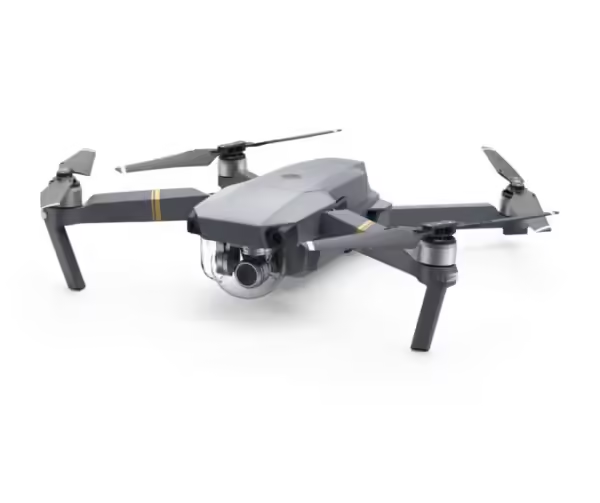
In September 2016, DJI introduced the first DJI drone that was compact and foldable: the DJI Mavic Pro. This was a new and exciting release, as it was smaller than previous models like the Phantom drones. The Mavic Pro could be folded to the size of a water bottle, making it super easy to carry and store. Even though it was small, it didn’t lose any of the powerful features that DJI drones were known for. It came with a 3-axis gimbal system, which helped keep the camera stable during flight. At the time, it was the smallest drone to have this feature. The Mavic Pro also had a 12-megapixel camera that could record in 4K, offering stunning video quality.
The first DJI drone to have such a powerful setup, the Mavic Pro could fly for up to 27 minutes and had a range of 7 km. Its small size and impressive features made it a favorite among both hobbyists and professional drone users. Once released, it quickly became one of the most popular drones in the world. This drone showed how drone technology had evolved, making it more accessible to everyday people, and how powerful technology could be packed into a small, easy-to-use package.
Unlike other drones at the time, which were often bulky and hard to transport, the first DJI drone in the Mavic Pro series was designed to be portable, compact, and convenient for all types of users. It set a new standard for drones, combining advanced features, a sleek design, and a user-friendly experience all in one. The Mavic Pro proved that DJI was leading the way in making high-quality drones that were smaller, smarter, and better for everyone.
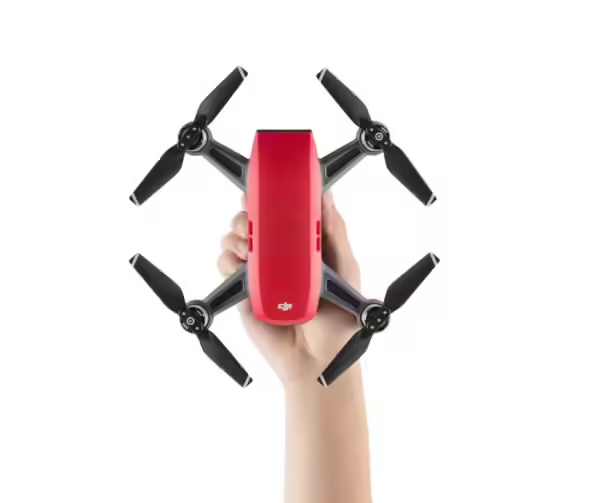
In 2017, DJI introduced the first DJI drone in its compact, lightweight range, the DJI Spark. This drone was only 300 grams, making it easy to carry and a perfect choice for new drone users. DJI created the Spark to be affordable and user-friendly, especially for those just starting with drones. One of the most exciting features was the Gesture Mode, which allowed users to control the drone with simple hand motions, making it even easier to fly. With the first DJI drone in this series, DJI showed its ability to integrate advanced technology into a tiny, affordable drone.
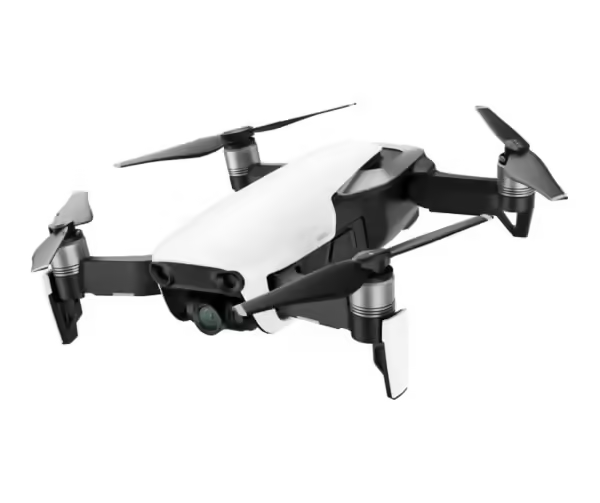
Shortly after, DJI released the Mavic Air in January 2018. This drone was another leap forward in innovation, offering power, portability, and ease of use. With its sleek design, the Mavic Air became a hit among drone enthusiasts of all ages. DJI took a step further by making the first DJI drone in this category even smaller, yet packed it with more advanced features. It had a 3-axis 4K camera that captured amazing footage at 100 mbps, and it came with intelligent flight modes, making it an ideal choice for all kinds of users. Additionally, the Mavic Air included 8GB of storage, a complete obstacle avoidance system, and more, making it one of the most popular drones at that time. With this release, DJI solidified its position as the leader in the drone market, with competitors unable to keep up.
The Spark and Mavic Air represented DJI’s commitment to continuous innovation, releasing smaller, more powerful drones with cutting-edge features. By combining portability, power, and ease of use, DJI created drones that appealed to both beginners and experienced pilots. The first DJI drone models, including the Spark and Mavic Air, set the stage for even more advanced technologies and introduced drones that anyone could fly with ease.

In 2017, DJI expanded its reach beyond the consumer market into the commercial drone industry, seeing the growth potential in professional and industrial sectors. The company introduced two important drone series designed for businesses and professionals: the Inspire series for film and photography, and the Matrice series for inspections and industrial use.
The Matrice 200 series was DJI’s latest entry into the commercial market, highlighting their commitment to innovation. This series was designed to revolutionize the way businesses collect aerial data, making it easier, more accurate, and affordable for enterprises. It included three versions: the Matrice 200, the Matrice 210, and the Matrice 210 RTK, each offering unique features. The Matrice 210 was especially noteworthy, as it was the first DJI drone that allowed operators to attach multiple cameras, including downward or upward-facing options, to better suit a variety of industrial needs.
The M200 series offered impressive capabilities with a flight range of up to 7 km and up to 35 minutes of flight time. It also featured an IP43 rating, which makes it resistant to dust and water. Overall, the M200 series demonstrated DJI’s ability to blend consumer-friendly features with high-performance technology, creating a drone that could handle complex commercial tasks with ease and precision.
In recent years, DJI has focused more on growing their brand, especially in camera and gimbal technology. In 2017, DJI made a major move by buying most of the iconic camera brand Hasselblad. This showed their serious commitment to branching out into other tech areas. From the very beginning, DJI invested in research and development for their DJI Zenmuse camera series. This included not only cameras designed for drones but also cameras that could be attached to their gimbal systems. One of their latest camera releases in this line was the Zenmuse X7, the first Super 35 digital film camera in the world. It was built to capture 6K video, meeting the needs of any professional aerial shoot. More recently, DJI launched the Zenmuse XT2, a combination of FLIR’s thermal sensor and DJI’s 4K camera, allowing users to capture both thermal and visual data from the sky at the same time.
DJI also created the now popular DJI Osmo Series, which are handheld gimbal systems. These devices made it easy for anyone to take smooth, stabilized video. The Osmo Mobile 2, launched in January 2018, is the most affordable handheld gimbal in the series, making high-quality video accessible for anyone.
For professionals, DJI designed the Ronin series of gimbals. The Ronin-S was their first single-handed gimbal system for DSLR and mirrorless cameras. The Ronin 2 is another high-end option, designed to help filmmakers capture smooth scenes with a variety of cameras and accessories.
Moving beyond drones, DJI has shown they are more than just a drone maker. They’ve worked hard to create a wide range of camera and gimbal systems like the Osmo Series, Ronin Series, and Zenmuse cameras. In 2017, they took a big step by acquiring a majority stake in Hasselblad, a well-known camera brand, which helped them expand their reach. DJI didn’t just focus on drones but made sure their entire tech ecosystem was strong. With smart cross-promotion of their drones, cameras, and gimbals, DJI became a leader in the tech world, recognized for more than just drones. Their success has been like how Apple dominates the tech market, with a whole system of connected products.
DJI continues to lead the drone industry, with 2025 shaping up to be a year of significant advancements and market growth. Here’s an overview of the latest developments:
Market Share and Value
Market Share: DJI holds approximately 70-80% of the global drone market, maintaining its position as the dominant player in the industry.
Market Value: The global drone market is projected to reach USD 40.18 billion by 2025, to $87.5 billion by 2033. with DJI leading the charge.
Technology and Innovation
DJI Matrice 4 Series: The Matrice 4 Series introduces advanced AI capabilities and smart detection features, enhancing aerial operations. Equipped with multiple intelligent sensors, including a laser range finder and infrared thermal camera, these drones are ideal for public safety, emergency response, and infrastructure inspection.
DJI Flip: Launched in January 2025, the DJI Flip is a compact, foldable drone designed for vloggers and hobbyists. It features a 1/1.3-inch CMOS sensor capable of capturing 48MP photos and 4K HDR videos, intelligent shooting modes, and a 31-minute flight time.
DJI Mini 5 Pro: This lightweight drone offers significant upgrades in image quality and intelligent features, including improved low-light sensitivity and intelligent flight modes like Follow Me, Orbit, and Waypoint Planning.
New Updates
AI-Powered Features: DJI drones are increasingly incorporating AI-powered features such as AI Subject Tracking, SmartPhoto technology, and intelligent flight modes to enhance user experience and safety.
Extended Flight Times: New models like the DJI Flip and DJI Mini 5 Pro boast extended flight times, making them more versatile and suitable for various applications.
Enhanced Camera Capabilities: Upgraded camera systems with higher resolutions, improved low-light performance, and advanced zoom capabilities are becoming standard in DJI’s new releases.
DJI’s continuous innovation and expansion into new markets are setting the stage for a promising future in the drone industry. The company’s commitment to technological advancement and user-centric design ensures its leadership in the evolving drone market.
DJI Flip
DJI Mavic 4 Pro
DJI Mini 5 Pro
DJI M400A (Matrice 400A)
DJI Dock 3
DJI Action 6
DJI OSMO Nano Series
These new products demonstrate DJI’s commitment to innovation and expanding its drone offerings for various applications.
| Date | Product |
|---|---|
| Feb 10, 2012 | Flame Wheel F330 ARF Kit |
| Feb 15, 2012 | Flame Wheel F550 ARF Kit |
| Jul 25, 2012 | S800 |
| Jul 26, 2012 | Zenmuse Z15 Camera Gimbal |
| Jan 7, 2013 | Phantom |
| Jul 2, 2013 | S800 EVO |
| Sep 4, 2013 | A2 Multi-Rotor Flight Controller |
| Sep 13, 2013 | DJI Zenmuse Z15-GH3 3-axis Gimbal |
| Oct 28, 2013 | Phantom 2 Vision |
| Nov 22, 2013 | Zenmuse Z15-5D 3-axis Gimbal |
| Dec 16, 2013 | Phantom 2 |
| Jan 20, 2014 | Phantom FC40 |
| Feb 24, 2014 | S1000 |
| Mar 24, 2014 | Zenmuse H3-3D for Drones |
| Apr 7, 2014 | Phantom 2 Vision+ |
| May 9, 2014 | Zenmuse Z15-BMPCC |
| Jun 25, 2014 | Ronin |
| Jul 16, 2014 | Zenmuse Z15-GH4 (HD) |
| Aug 4, 2014 | S900 |
| Sep 18, 2014 | Zenmuse Z15-5D III (HD) |
| Oct 23, 2014 | S1000+ |
| Nov 13, 2014 | Inspire 1 |
| Jan 7, 2015 | 3-axis Gimbal for Sony A7 Cameras |
| Jan 19, 2015 | H4-3D Gimbal |
| Apr 9, 2015 | Phantom 3 (Professional & Advanced) |
| Apr 13, 2015 | Ronin-M |
| Jun 8, 2015 | DJI Matrice 100 |
| Aug 5, 2015 | Phantom 3 Standard |
| Sep 11, 2015 | Zenmuse X5 & X5R |
| Oct 8, 2015 | Osmo |
| Nov 27, 2015 | Agras MG-1 |
| Dec 10, 2015 | Zenmuse XT |
| Jan 5, 2016 | Phantom 3 4K |
| Mar 2, 2016 | Phantom 4 |
| Apr 17, 2016 | Osmo RAW |
| Apr 17, 2016 | Matrice 600 |
| Jul 14, 2016 | Zenmuse Z3 |
| Sep 28, 2016 | Mavic Pro |
| Oct 24, 2016 | Zenmuse Z30 |
| Nov 10, 2016 | Matrice 600 Pro |
| Nov 16, 2016 | Inspire 2 |
| Nov 16, 2016 | Phantom 4 Pro |
| Nov 16, 2016 | Zenmuse X4S |
| Nov 16, 2016 | Zenmuse X5S |
| Feb 26, 2017 | Matrice 200 Series |
| Mar 28, 2017 | Agras MG-1S & MG-1P |
| Apr 13, 2017 | Phantom 4 Advanced |
| Apr 23, 2017 | Ronin 2 |
| Apr 23, 2017 | DJI Goggles |
| May 24, 2017 | Spark |
| Aug 24, 2017 | Mavic Pro Platinum |
| Aug 24, 2017 | DJI Phantom 4 Pro Obsidian |
| Oct 11, 2017 | Zenmuse X7 |
| Nov 7, 2017 | DJI Wind 4 and DJI Wind 8 |
| Nov 22, 2017 | DJI Goggles Racing Edition (RE) |
| Jan 7, 2018 | Osmo Mobile 2 |
| Jan 7, 2018 | Ronin-S |
| Jan 8, 2018 | Tello (Collaboration between Ryze Tech, DJI, and Intel) |
| Jan 24, 2018 | Mavic Air |
| Mar 28, 2018 | Zenmuse XT2 |
| May 8, 2018 | Phantom 4 Pro V2.0 Edition |
| Aug 23, 2018 | Mavic 2 Pro |
| Aug 23, 2018 | Mavic 2 Zoom |
| Oct 15, 2018 | Phantom 4 RTK |
| Oct 29, 2018 | Mavic 2 Enterprise |
| Nov 29, 2018 | Osmo Pocket |
| Jan 8, 2019 | DJI Smart Controller |
| Feb 21, 2019 | Matrice 200 Series V2 |
| May 15, 2019 | Osmo Action |
| Jun 12, 2019 | RoboMaster S1 |
| Jul 7, 2019 | Ronin-SC |
| Jul 31, 2019 | DJI Digital FPV Ecosystem |
| Aug 13, 2019 | Osmo Mobile 3 |
| Sep 25, 2019 | Agras T16 |
| Sep 25, 2019 | P4 Multispectral (Based on Phantom 4 Design) |
| Oct 30, 2019 | Mavic Mini |
| Dec 30, 2019 | Zenmuse XT S (Thermal imaging camera for enterprise) |
| Apr 27, 2020 | Mavic Air 2 |
| May 7, 2020 | Matrice 300 RTK |
| May 7, 2020 | Zenmuse H20 Series |
| Aug 26, 2020 | DJI OM 4 |
| Oct 14, 2020 | DJI Zenmuse L1 |
| Oct 14, 2020 | DJI Zenmuse P1 |
| Oct 15, 2020 | DJI RS 2 (part of the Ronin series) |
| Oct 15, 2020 | DJI RSC 2 (part of the Ronin series) |
| Oct 20, 2020 | DJI Pocket 2 |
| Nov 5, 2020 | DJI Mini 2 |
| Nov 13, 2020 | AGRAS T20 |
| Dec 15, 2020 | Mavic 2 Enterprise Advanced |
| Mar 2, 2021 | DJI FPV |
| Apr 15, 2021 | DJI Air 2S |
| Sep 8, 2021 | DJI OM 5 |
| Oct 20, 2021 | Ronin 4D with Zenmuse X9-8K and Zenmuse X9-6K Combos |
| Oct 27, 2021 | DJI Action 2 |
| Nov 4, 2021 | DJI Mavic 3 |
| Mar 21, 2022 | DJI Matrice 30 |
| Mar 21, 2022 | DJI Zenmuse H20N |
| May 10, 2022 | DJI Mini 3 Pro |
| Jun 15, 2022 | DJI RS 3 & RS 3 Pro |
| Aug 25, 2022 | DJI Avata |
| Sep 14, 2022 | Osmo Action 3 |
| Sep 22, 2022 | Osmo Mobile 6 |
| Sep 27, 2022 | Mavic 3 Enterprise |
| Nov 2, 2022 | Mavic 3 Classic |
| Nov 23, 2022 | Mavic 3 Multispectral (Mavic 3M) |
| Dec 9, 2023 | DJI Mini 3 |
| Jan 10, 2023 | DJI RS 3 Mini |
| Mar 7, 2023 | Ronin 4D Flex |
| Apr 13, 2023 | Inspire 3 |
| Apr 25, 2023 | Mavic 3 Pro |
| May 18, 2023 | Matrice 350 RTK |
| Jul 25, 2023 | DJI Air 3 |
| Aug 2, 2023 | Osmo Action 4 |
| Sep 25, 2023 | DJI Mini 4 Pro |
| Oct 10, 2023 | DJI Zenmuse L2 |
| Oct 25, 2023 | Osmo Pocket 3 |
| Dec 14, 2023 | Ronin 4D-8K |
| Apr 11, 2024 | Avata 2 |
| Apr 25, 2024 | DJI Agras T50 and T25 |
| May 16, 2024 | Zenmuse H30T & H30 |
| Sep 5, 2024 | DJI Neo |
| 2025 | DJI Matrice 4T/E |
| 2025 | DJI Flip |
| 2025 | DJI O4 Air Unit (Pro) |
| 2025 | DJI Fast Chargers for the DJI Power 1000 |
| 2025 | Mavic 4 Pro |
| 2025 | Mini 5 Pro |
| 2025 | M400A (Matrice 400A) |
| 2025 | DJI Dock 3 |
| 2025 | Action 6 |
| 2025 | OSMO Nano series |
Visit – Top 16 Best DJI Alternative Drones – Top DJI Competitors
Visit- How to See Live Satellite Images of My House in Real Time?
Read: Autel EVO Lite Enterprise VS DJI Mavic 3 Thermal
Read: Best Jobs for Drone Pilots – Top Careers as a UAV Pilot
Check out: Best DJI and Autel Drone Camera Price
Check out: Drone with 4k Camera
Check out: Best Drones with Thermal Camera
Check out: Best Photogrammetry Drone
Check out: Best Drone for Powerline Inspection Drone
Check Out: Best Drone for Filmmaking, cinematography & Media
Top 10 Best Drones in Construction
DJI Thermal Drone and Night Vision Drone Comparison
Autel EVO Lite Enterprise VS DJI Mavic 3 Thermal
Drone Pilot Career: Exploring Job Opportunities in the UAV Industry
Top 16 Best DJI Alternative Drones – Top DJI Drone Competitor
Detailed Guide to Photogrammetry with Drones: Best Drone with Camera
Choosing The Right Drone for LiDAR
DJI Mini 3 vs Mini 3 Pro? Which Drone Should you Buy?
DCAA and GCAA Drone and UAV Fly Zone Map in Dubai, UAE
Get UAV License and Drone Permit in UK
Best Drone in Media and Filmmaking Cinematography

Drone Inspection Guide: How UAV Inspection Is Used Today Drone inspection technology is now widely used across industries where routine
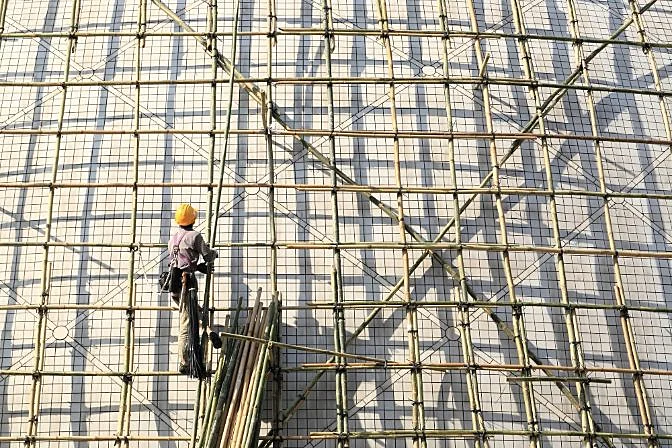
Scaffolding is a temporary structure used in building construction to support workers, tools, and materials while work takes place at